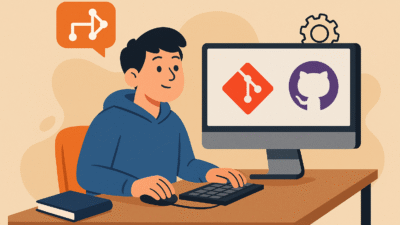The modern fast-changing technical environment makes software product development essential because it allows businesses to create innovative products for market expansion while fulfilling customer requirements. Developers at any level need to know all aspects of product development to create successful software. Users will find guidance throughout this document to build their software product properly following development steps which combine function and user experience.
- Preparing a Solid Base Requires Idea Validation Combined with Market Research
Each product success within software development relies on developing precise solutions for identified problems.
Market research stands as the fundamental requirement to start development because it requires identifying your audience and understanding market direction and studying existing solutions. Your product identifies genuine problems in the market through this process.
The development of correct software depends on early validation of your concept. You must employ surveys combined with interviews and prototype testing (minimum viable product or MVP) for collecting feedback before spending major resources.
- Creating the Design Involves the Combination of Wireframing with User Experience (UX/UI)
After validation comes the time to determine how users will use and interact with the product. Design performs an essential function to create user interfaces which both work easily and bring engaging outcomes.
Visual product arrangement and design organization takes form through the creation of Wireframes. The current stage enables you to demonstrate user navigation paths without worrying about visual aspects that will be added later.
Your focus as a User Experience (UX) professional is to enhance user navigation while the User Interface (UI) specialist cares about visual design. The main objective of UI design is to create visual attractiveness for users. Outstanding UX/UI solutions enhance both customer happiness while making software applications easier to use.
- Development: Turning Design Into Code
Following blueprint creation you need to start converting it into programming code. After the creation of your design the actual vision development begins.
A proper technology combination that includes programming languages frameworks and databases defines how much your software can scale and perform. The most common technology stacks used by developers include MERN for building web applications as well as Swift for iOS application creation.
Users interact with frontend elements to view website designs which represent the visual components shown to them. All server-facing operations run in the backend together with database functions and APIs. The product requires both components to function properly since these elements must work in harmony.
Team collaboration becomes more efficient through the implementation of version control systems which include GitHub and GitLab. Antivirus programs protect against malware without interrupting the system. Version control tracks which code versions are being developed and helps prevent both outdated code errors and helps quotas occur.
- Testing: Ensuring Quality and Functionality
A product reaches completion only after proper testing. Testing reveals bugs but at the same time confirms that the product adheres to the strictest quality benchmarks.
The development process requires three essential types of testing which include unit testing for individual components and integration testing for component collaboration as well as user acceptance testing for customer need verification.
The use of automated testing allows developers to complete monotonous responsibilities faster and works best for extensive systems. The evaluation of end-user experience and the discovery of automated test oversight requires manual testing as its fundamental method.
- The process of product deployment along with maintenance operations begins when your application goes live.
The software concludes its thorough testing phase and becomes ready for its launch into production. Launching the product marks a new beginning for the program.
Careful planning stands necessary when it comes to product deployment. A product must be prepared for deployment by fulfilling scalability requirements and achieving full security measures and eliminating all operational issues. A CI/CD pipeline together with its tools allows organizations to automate their deployment processes.
Software products require ongoing maintenance activities starting after their release into the market. Maintaining your product through bug fixes and feature developments and user feedback response will lead to long-term business achievement. Product updates deliver two main advantages such as improved user satisfaction and better competitive positioning.
- Collaborative Teams: The Heart of Software Development
A team collaboration stands as the foundation for every product achievement in the software world.
Product Managers hold responsibility to link product vision elements with essential customer needs as well as business priorities and technical engineering limitations. The responsibility of these professionals is to connect teams together and lead priority management efforts.
Software developers write programming code together with developers who construct product features and guarantee functional execution. The end product successfully matches its vision through design and product management assistance provided by developers.
Bridging the product with users’ interaction lies at the core of UX/UI designers’ responsibility. User satisfaction and engagement depend on how well their work performs which makes product success heavily depend on their role.
QA engineers must thoroughly inspect the product to find problems which would otherwise cause issues for end users before its release. Despite their efforts they aim to provide end users with a seamless product that lacks errors.
- The execution of software projects involves consistent challenges that developers must address
Every development project faces challenges. Early detection along with proper solutions produces important results in product development.
The growth of projects generates supplementary features along with changes that frequently triggers spending surplus and deviates from deadlines. Management of scope remains vital because it keeps projects on track to fulfill their essential functional goals.
The development period tends to exceed initial scheduling expectations because of time and budget constraints. Project success depends on both complete timeline planning and budgeting to achieve project objectives within set timelines as well as deliver high quality results.
The practice of making design choices or writing simpler code today creates permanent complications for your expanding software system. Proper planning with regular code refactoring practices enables teams to avoid future substantial problems.
- Best Practices for Successful Product Development
The following guidelines will boost your project success rates:
Agile development works through iterative progress according to its methodology. Being flexible with the methodology lets you receive fast feedback which enables you to adapt readily as the project evolves.
Your development process must start with customer needs by seeking user feedback and creating solutions for their genuine problems. Consistent user testing of your product will help you remain focused while verifying the product meets customer requirements.
Clear communication between staff members remains essential since it enables everyone to maintain cooperation regardless of their physical location. The tools Slack, Trello and Jira function to maintain consistent understanding between team members.




